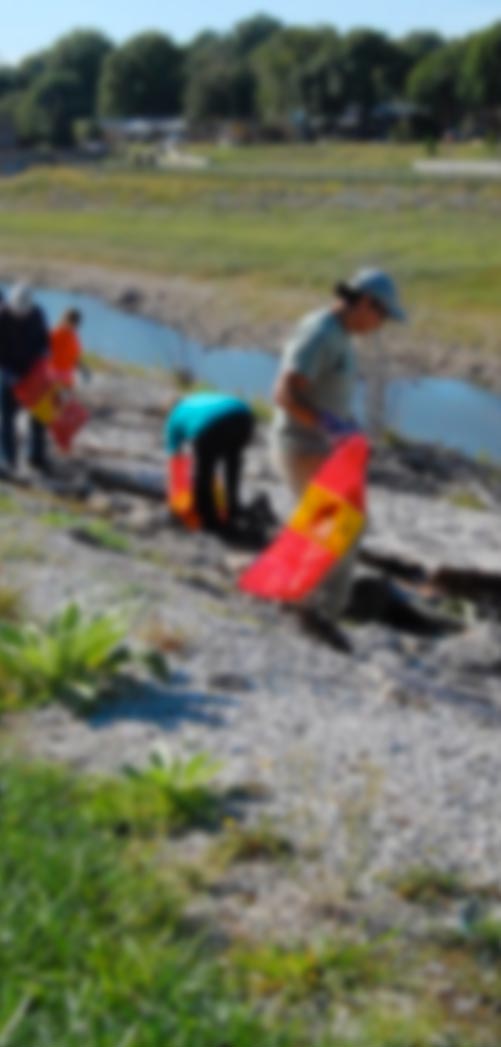The Land, Air, Water Aotearoa (LAWA) project has released freshwater quality and ecological health monitoring results from more than 1,500 river sites and around 200 lake sites across New Zealand.
The results span river and lake health indicators measured in monitoring programmes operated by regional and unitary councils and NIWA. Scientists and statisticians with the LAWA project analysed the comprehensive freshwater dataset and updated the River Health National Picture and Lake Health National Picture for 2023 to reflect this new information.
Cawthron Institute Freshwater Ecosystems Manager and scientist with the LAWA project, Dr Roger Young said the annual World Rivers Day release of updated freshwater monitoring data on the LAWA website serves as a valuable prompt to regularly evaluate the health of New Zealand’s awa.
“A lot of work is underway to improve freshwater, the reports released today serve as a reminder of the need for continued attention and action.
“While the risk of toxic effects from nitrate and ammonia is limited to a small percentage of sites, data up to June 2022 reveals that impaired ecological health and elevated E. coli contamination is evident at almost two-thirds of monitored sites.
“We know that indicators of ecological health take some time to respond to restoration efforts, while some indicators of river water quality can respond more quickly to change. We are seeing encouraging signs of improving clarity and phosphorus in our rivers with an increased number of monitored sites in the A and B state bands and fewer sites in the poor D band over the last 10 years,” said Dr Young.

The LAWA project calculates the state of a river health attribute in line with the National Policy Statement for Freshwater Management 2020 (NPS-FM 2020). This requires 5-years of regular sampling to generate a state band score. It therefore takes time for positive or negative changes in water quality or ecological health to show up.
At the individual site level, communities working to restore waterways and other interested people can explore all the individual results from regular council monitoring of more than 1,700 river and lake sites up to the end of 2022 on the LAWA website.
Dr Roger Young explained water quality and the wellbeing of aquatic ecosystems are largely influenced by surrounding land-use activities, with urban areas and pastoral lands showing signs of pollution and degraded habitats.
“With urban streams typically receiving the worst health scores, the impact on our urban communities becomes pronounced.
“Although urban streams make up just 1% of the country’s total river length, their wellbeing directly affects a majority of New Zealanders, given that 9 out of 10 residents live in urban areas," said Dr Young.
Waikato Regional Council Senior Water Scientist Dr Mafalda Baptista has been leading the work to analyse the lake health monitoring results available on LAWA at a national level.
"We have taken a fresh approach to understanding lake condition nationally by evaluating the Trophic Level Index of lakes by depth and altitude. A key observation is that the vast majority of monitored lowland shallow lakes are in poor or very poor condition.
“There is not a single monitored lake shallower than 10 metres in very good condition. We take heart in our upland lakes, most of them are in a fair or good condition.
"For the first time, we have sufficient data to present state bands over time for lake health indicators including chlorophyll a, phosphorus, nitrogen and ammonia toxicity at the national level.
“Looking at the state of lake health indicators at a national level, over 60% of monitored lakes [92 lakes] have ecological communities impacted by algal and plant growth arising from elevated nutrient concentrations, with subsequent reduced water clarity,” said Dr Baptista.
LAWA Project Chair Dr Tim Davie highlighted the significant effort behind the National Pictures published today.
"These findings are backed by more than 1,800,000 data points. Each individual data point is a result from physical sampling, that is then analysed by an independent laboratory, and reported by the council through to LAWA for the public to access.
“The commitment of regional and unitary council staff to get strong state of the environment records has been demonstrated by the way they worked to return to regular sampling as soon as was safely possible throughout the Covid-19 pandemic and many recent extreme weather events.
“We are starting to see the impact of challenges such as Covid-19 lockdowns on our ability to access the state and trends at some sites, and it shows how vital the regularity of our field staff’s sampling is to being able to understand New Zealand’s precious freshwater,” said Dr Davie.
Dr Davie went on to signal a new LAWA website topic under development for release in 2024 that will share freshwater improvement actions captured by a national Healthy Waterways Register.
Ministry for the Environment Deputy Secretary for the Joint Evidence, Data and Insights Group, Natasha Lewis said the values of continual improvement underpin the LAWA project collaboration between the Ministry for the Environment, Te Uru Kahika - Regional and Unitary Councils Aotearoa, Cawthron Institute, the Department of Conservation, and Stats NZ.
“We are working together to improve state of the environment monitoring and reporting over time.
“This is important because the data on the LAWA website is used by central Government agencies in our reporting, decision-making, and stewardship – as well as local government, iwi/hapu, industry, and communities,” said Ms Lewis.

